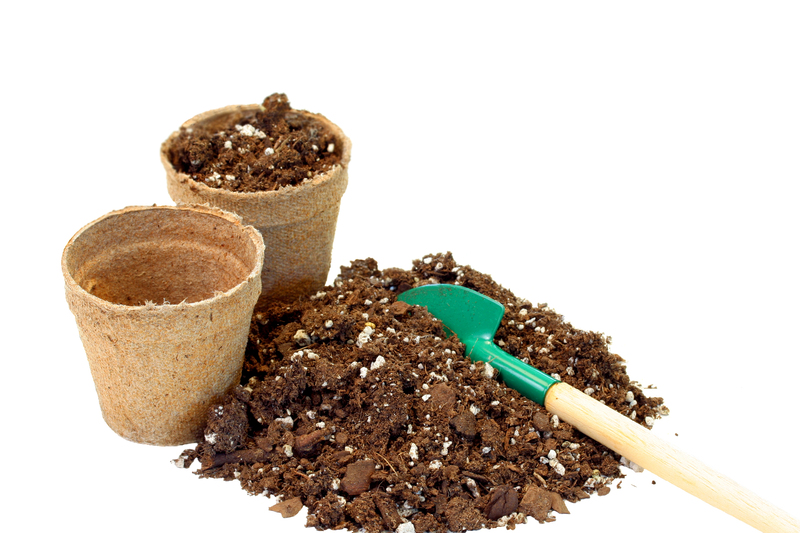Creating Gardens That Combat Climate Change
Posted on 15/08/2025
Creating Gardens That Combat Climate Change: A Comprehensive Guide
Climate change is one of the most pressing challenges facing humanity today. But did you know that your home garden can play a significant role in reducing greenhouse gas emissions and supporting a healthier planet? Let's explore the science and strategies behind building gardens that fight climate change.

Why Climate-Resilient Gardens Matter
Gardens that address climate change are more than a trend--they are a necessity. The urbanization of land and loss of natural habitats are exacerbating climate challenges. By designing gardens that help absorb carbon, save water, and foster biodiversity, homeowners and communities contribute to global climate solutions. Creating gardens that combat climate change benefits both the environment and our well-being.
- Vegetation absorbs CO?, directly removing greenhouse gases from the atmosphere.
- Soil acts as a carbon sink, sequestering carbon with healthy gardening practices.
- Native plants reduce resource use, requiring less watering, fertilizers, and maintenance.
- Biodiverse gardens support wildlife, strengthening ecosystem resilience.
Understanding the Carbon Cycle in Your Garden
At its core, gardening for climate change means understanding how plants, soil, and organic matter interact with the atmosphere. Plants utilize photosynthesis to absorb carbon dioxide (CO2) from the air and transform it into energy, releasing oxygen in the process. Healthy, undisturbed soils lock away additional carbon, taking it out of the carbon cycle for decades or even centuries when managed properly.
The Principles of Climate Positive Gardening
Climate positive garden design rests on a handful of powerful principles:
- Maximize plant coverage to absorb more CO? and cool local microclimates.
- Prioritize native and adaptive species for drought tolerance and resilience.
- Ensure soil health using organic techniques and minimizing disturbance.
- Incorporate water-wise features through rain gardens and permeable surfaces.
- Foster biodiversity by planting a variety of species and creating habitats.
- Reduce synthetic inputs by avoiding chemical fertilizers and pesticides.
Strategies for Creating Gardens That Tackle Climate Change
1. Planting Trees: Nature's Carbon Sinks
Trees are some of the most effective tools in the fight against climate change. They absorb significant amounts of CO?, provide cooling shade, and offer habitat for wildlife. Consider incorporating native or appropriately adapted trees into your climate-friendly garden:
- Shade trees reduce energy use by cooling homes and outdoor areas.
- Fruit and nut trees offer food while providing ecological benefits.
- Evergreens sequester carbon year-round and provide winter habitat.
2. Boosting Soil Health: The Garden's Hidden Power
Healthy soils are rich in organic matter and living organisms that lock carbon underground. The following practices turn gardens into powerful carbon sinks:
- Composting: Convert kitchen scraps and garden waste into nutrient-rich soil amendments, naturally increasing soil carbon.
- Mulching: Retains moisture, suppresses weeds, and adds organic matter as it breaks down.
- No-till gardening: Disturbing the soil less preserves soil structure, supports microbial life, and limits CO? release.
- Cover cropping: Planting green manures or cover crops in the off-season protects and enriches the soil.
3. Choosing Climate-Appropriate Plants
Native plants and drought-tolerant species thrive with less water, fertilizer, and care. Because they are adapted to local conditions:
- Deeper roots help stabilize soil and store carbon.
- They support pollinators and other wildlife crucial to ecosystem health.
- Low water needs mean less strain on local water supplies, especially important as climate patterns shift.
4. Water Conservation Through Smart Design
Conserving water is a key pillar of gardens that fight climate change. Excessive irrigation wastes energy and resources:
- Install rain gardens to capture stormwater and filter runoff before it reaches sewers or waterways.
- Use drip irrigation systems that deliver water directly to plant roots for efficiency.
- Collect rainwater in barrels for garden use, reducing dependence on municipal water supplies.
- Group plants by water needs to further reduce irrigation requirements.
5. Promoting Biodiversity for Greater Resilience
Biodiversity makes gardens more resilient to pests, diseases, and extreme weather events.
- Plant a variety of species: Diversity supports more insects, birds, and beneficial organisms.
- Create layers: Mix trees, shrubs, perennials, and ground covers for complex habitats.
- Install pollinator and wildlife shelters: Native bees, butterflies, ladybugs, and birds all benefit.
Richer gardens are not only more beautiful, but they also provide ecosystem services that buffer against the impacts of climate change.
6. Reducing Chemical Inputs and Synthetic Materials
Chemical fertilizers and pesticides are energy-intensive to produce and can harm beneficial soil life. Instead:
- Use compost and organic amendments to feed your soil.
- Encourage natural pest control with beneficial insects and companion planting.
- Choose tools and garden furniture made from sustainable or recycled materials.
Designing a Climate-Responsive Garden: Steps & Examples
Step 1: Analyze Your Site
Observe sunlight, water flow, wind exposure, and existing vegetation. Identify microclimates where certain species might thrive. Understanding your site's natural patterns helps conserve resources and lower your garden's environmental impact.
Step 2: Develop a Planting Plan
- Select a diverse mix of native, drought-tolerant, and pollinator-friendly plants.
- Incorporate edibles, shrubs, perennials, and groundcovers for year-round carbon capture.
- Consider layering and structure to maximize biomass and carbon sequestration.
Step 3: Add Soil-Building Features
- Create a compost area for organic waste recycling.
- Mulch planting beds with leaves, straw, or wood chips.
- Limit digging or rototilling to protect soil life and structure.
Step 4: Integrate Water-Saving Systems
- Install permeable pathways that allow rain to soak into the ground.
- Build swales or rain gardens to capture and store water efficiently.
- Collect rainwater and use smart irrigation technology as needed.
Step 5: Foster Wildlife and Biodiversity
- Provide shelter with logs, rocks, or small brush piles.
- Add water features, such as bird baths or a small pond, to support a wider range of species.
- Leave some plant stems and seed heads over winter for birds and insects.
Maximizing Your Garden's Climate Impact
Go Beyond Your Boundaries
Joining community-based gardening and tree-planting programs amplifies local environmental benefits. Encourage neighbors, schools, and local organizations to adopt climate-friendly gardening principles. Together, neighborhoods and cities can become important "green lungs" for our planet.
Measure and Monitor Success
Track your garden's impact by observing:
- Soil improvements: Deeper, richer, and more biologically active soils store more carbon.
- Wildlife sightings: More pollinators and birds indicate greater habitat success.
- Water use: Monitor for reductions in irrigation needs and benefits from rain capture.
- Plant growth: More vegetation equates to more carbon sequestration and local cooling.
Small gardens can, over time, make a big difference--especially when efforts are multiplied across communities and regions.
Inspiring Examples of Gardens That Fight Climate Change
Urban Food Forests
From Los Angeles to London, "food forests" are transforming urban lots into carbon-sequestering, edible ecosystems. These multilayered gardens include fruit trees, nitrogen-fixing shrubs, berry bushes, and groundcovers--demonstrating how cities can become climate solutions.
Pollinator Pathways
Pollinator pathways link parks, private gardens, and roadways with continuous stretches of wildflowers and native plants. Not only do these corridors support struggling bee and butterfly populations, but they also draw down carbon and cool neighborhoods on the hottest days.
Rain Gardens for Resilience
By sculpting low-lying areas where runoff collects after storms, rain gardens filter pollutants and recharge groundwater. These features prevent flooding and add beauty, while supporting a climate-adapted landscape.

FAQ on Gardens that Combat Climate Change
Can a Small Garden Really Make a Difference?
Yes! Every square meter planted with climate-conscious choices helps store carbon, cool the air, and support biodiversity. When gardeners share knowledge and inspire their communities, the effects multiply quickly.
Should I Avoid All Non-Native Plants?
Native plants are the best choice, as they require fewer resources and support local wildlife. However, well-chosen non-native but non-invasive species, especially drought-tolerant Mediterranean or prairie plants, can complement native plantings where appropriate.
What's the Best Way to Start a Climate-Positive Garden?
- Prioritize soil health and reduce chemical inputs.
- Select native and resilient plants for your region.
- Capture and conserve water with smart, sustainable systems.
- Share your garden's story to inspire others and grow the movement.
Gardening for the Future
Creating gardens that combat climate change doesn't require sacrificing beauty or productivity--quite the opposite! Thoughtful, climate-responsive gardening is aesthetically rewarding, supports wildlife, saves resources, and builds a more sustainable world from the ground up.
As you design or update your own outdoor space, remember that every tree, shrub, and patch of healthy soil is a small victory in the global effort to tackle climate change. Your garden is not just a sanctuary for you, but a vital element in the world's environmental resilience.
Together, we can sow the seeds for a healthier, cooler, and more beautiful planet.

